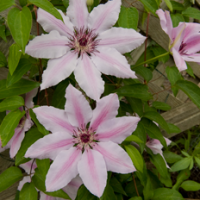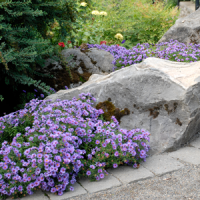PLANTS MORE FAVORED BY GRAZING DEER
Under normal feeding pressure, the following plants are among the most prone to grazing by deer. Higher deer populations are likely to result in feeding activity on a much wider range of plants.
PERENNIALS
Alcea (Hollyhock) – biennial
Anemone x hybrida (Japanese Anemone) – tender
Aquilegia (Columbine)
Armeria (Thrift)
Aster (Aster) – North American native Asters may be found listed under the following generic names: Ampelaster, Doellingeria, Eurybia, Ionactis, Oclemena, Seriocarpus & Symphyotrichum
Boltonia (Thousand Flower Aster)
Centranthus ruber (Red Valerian)
Chelone (Turtlehead)
Chrysanthemum (Mum)
Crocus (Spring-flowering Crocus)
Delphinium (Larkspur)
Echinacea (Coneflower)
Filipendula (Meadowsweet)
Helianthus (Sunflower)
Heliopsis (Oxeye Sunflower)
Hemerocallis (Daylily)
Hibiscus (Rose Mallow)
Hosta (Hosta)
Iberis (Candytuft)
Leucanthemum (Shasta Daisy)
Lilum (Lily)
Lobelia cardinalis (Cardinal Flower)
Malva (Mallow)
Papaver (Poppy)
Phlox (Summer Phlox-Paniculata Group)
Rudbeckia (Black-eyed Susan)
Sedum (Stonecrop) – Stonecrops may also be found listed under the following generic names: Hylotelephium, Petrosedum, Phedimus, Rhodiola & Sinocrassula
Tradescantia (Spiderwort)
Tulipa (Tulip)
ANNUALS
Begonia (Fibrous & Tuberous Begonias)
Bellis (English Daisy)
Caladium (Caladium)
Callistephus (China Aster)
Dahlia (Dahlia)
Helianthus (Sunflower)
Impatiens (Impatiens)
WOODY PLANTS
Abies (Fir)
Cercis (Redbud)
Clematis (Clematis)
Euonymus (Euonymus)
Hydrangea (Hydrangea)
Juniperus (Juniper)
Malus (Apple & Crabapple)
Prunus (Cherry & Plum)
Rhododendron (Azalea & Rhododendron)
Rosa (Rose)
Salix (Willow)
Sorbus aucuparia (European Mountain Ash)
Taxus (Yew)
Thuja (Arborvitae)
Tsuga (Hemlock)
1/17



